Biomedical Applications of RF/Microwaves – A Perspective
By Rajeev Bansal
The field of biomedical applications of radio frequency (RF)/microwaves is robust! This is evident from the technical sessions and workshops devoted to biomedical imaging, sensors, and MRIs at the recently held IEEE MTT-S International Microwave Symposium in Montreal. Furthermore, in spite of the challenges posed by FDA approvals and unique application environments, many RF and microwave firms are finding success serving medical markets.
If you attended the recent IEEE MTT-S International Microwave Symposium (June 17-22, 2012, Montreal, Canada) as I had the opportunity to do, you probably noticed that the radio-frequency (RF)/microwave research community remains seriously engaged in the pursuit of biomedical applications of this part of the electromagnetic spectrum. Such annual events, highlighting the beneficial aspects of the non-ionizing electromagnetic waves, clearly remind us of how far we have come in exploring applications that transcend the traditional defense-based boundaries of this engineering field. At the same time, they also serve as a useful counterpoint to the periodic media reports on the putative dangers of non-ionizing electromagnetic radiation.

The IEEE Microwave Symposium in Montreal [1] showcased biomedical applications of RF/microwaves through the following technical sessions and workshops:
- RF Devices for Wireless Health Care Applications and Biosensing
- Biomedical Imaging
- Biomedical Sensors
- RF and Analog ICs for Biomedical Applications
- RF Coils and Components for MRI Receiving Applications
The technical sessions presented new advances in monitoring (e.g., non-contact detection of the vital signs), imaging (noninvasive breast cancer detection), medical sensors (such as those for identifying cancel cell aggressiveness grade), and measurement techniques for the electromagnetic exposure of biological cell suspensions. The area of magnetic resonance imaging (MRI) is becoming so important that the symposium had a workshop on the RF aspects of MRI systems. The workshop on RF and Analog ICs for Biomedical Applications demonstrated how advances in the RF IC (integrated circuits) technology have proved to be great enablers in developing novel biomedical applications including wearable and implantable sensors and devices. The momentum in the area of biomedical applications amply on display at the Montreal Symposium will continue: a special issue of the IEEE Transactions on Microwave Theory and Techniques devoted to biomedical applications [2] is currently in the works and should come out in Spring 2013.
Since the research community is often ahead of the curve by virtue of its focus on devices that may be years away from commercial realization, it is also valuable to get a market perspective on medical applications of RF/microwave devices. A recent report [3] in Microwaves & RF is helpful in that regard. While many companies have been in the MRI (the RF transceiver portion) business for years, “an increasing number of firms are enabling and supporting applications like imaging, testing, scanning, and rehabilitation” [3]. One major trend is the gradual replacement of traditionally wired links in the medical systems by wireless ones, generally in the industrial, scientific, and medical (ISM) bands. These links are characterized by low power (running off batteries) and low data rates. IEEE 802.15.4 and Bluetooth Low Energy (BLE) are two of the standards being implemented for wireless medical devices. Beyond the growth in the wireless networking of medical devices, there are current products as well as future opportunities in RF energy sources (e.g., power amplifiers for RF ablation), electric-field sensors for the non-contact reading of electrocardiographs (ECG), and impulse radar transceiver chips (for heartbeat monitoring). For medical applications, the need to get the medical device approved by the Food and drug administration (FDA) in the US or by a similar regulatory agency in other countries adds to the complexity of the RF/microwave biomedical device market. While many RF/microwave component/subsystem firms lack direct experience in this area, they are able to play a supporting role for their customers (the medical device/system manufacturers). The report concludes that “despite a steep learning curve posed by FDA approvals and unique application environments, a growing number of RF and microwave firms are finding success serving medical markets.” [3]
NOTE: This article is a significantly updated version of my column that appeared originally in the August 2011 issue of the IEEE Antennas and Propagation Magazine and subsequently in the December 2011 issue of the IEEE Microwave Magazine.
For Further Reading
[1] Symposium Technical Program[2] Announcement of Special Issue on Biomedical Applications, of the IEEE Transactions on Microwave Theory and Techniques
[3] Microwaves Energize Medical Applications, Microwaves & RF, July 2011







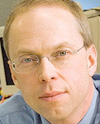 Pierre DuPont is Staff Scientist, Cardiovascular Surgery; and Chief, Pediatric Cardiac Bioengineering, at Boston Children's Hospital, Boston, MA USA.
Pierre DuPont is Staff Scientist, Cardiovascular Surgery; and Chief, Pediatric Cardiac Bioengineering, at Boston Children's Hospital, Boston, MA USA. 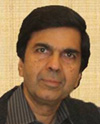 Rajeev Bansal received his PhD in Applied Physics from Harvard University in 1981. Since then he has taught and conducted research in the area of applied electromagnetics at the University of Connecticut.
Rajeev Bansal received his PhD in Applied Physics from Harvard University in 1981. Since then he has taught and conducted research in the area of applied electromagnetics at the University of Connecticut. 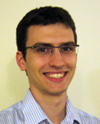 Kevin Mazurek is a graduate student at Johns Hopkins University, working on his Ph.D. in electrical and computer engineering.
Kevin Mazurek is a graduate student at Johns Hopkins University, working on his Ph.D. in electrical and computer engineering. 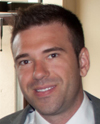 Bradley J. Holinski is currently a graduate student in Biomedical Engineering at the University of Alberta. He obtained a BSc. in Electrical Engineering at the University of Albeta in 2007.
Bradley J. Holinski is currently a graduate student in Biomedical Engineering at the University of Alberta. He obtained a BSc. in Electrical Engineering at the University of Albeta in 2007. 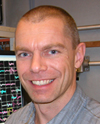 Dirk G. Everaert received his undergraduate degree in physical therapy from the University of Leuven, Belgium, in 1989.
Dirk G. Everaert received his undergraduate degree in physical therapy from the University of Leuven, Belgium, in 1989. 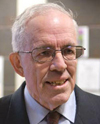 Richard B. Stein (DPhil, Physiology, Oxford University, Oxford UK, 1966) is currently a Research Professor of Physiology and Biomedical Engineering, University of Alberta, Edmonton, Canada and co-director of the Rehabilitation Neuroscience Group.
Richard B. Stein (DPhil, Physiology, Oxford University, Oxford UK, 1966) is currently a Research Professor of Physiology and Biomedical Engineering, University of Alberta, Edmonton, Canada and co-director of the Rehabilitation Neuroscience Group. 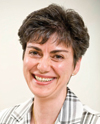 Vivian K. Mushahwar received a B.S. degree in electrical engineering from Brigham Young University, Provo, UT, in 1991, and a Ph.D. in bioengineering from the University of Utah, Salt Lake City, in 1996.
Vivian K. Mushahwar received a B.S. degree in electrical engineering from Brigham Young University, Provo, UT, in 1991, and a Ph.D. in bioengineering from the University of Utah, Salt Lake City, in 1996. 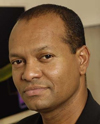 Ralph Etienne-Cummings received a B.Sc. degree in physics from Lincoln University, Oxford, PA, in 1988, and M.S.E.E. and Ph.D. degrees in electrical engineering from the University of Pennsylvania, Philadelphia.
Ralph Etienne-Cummings received a B.Sc. degree in physics from Lincoln University, Oxford, PA, in 1988, and M.S.E.E. and Ph.D. degrees in electrical engineering from the University of Pennsylvania, Philadelphia.